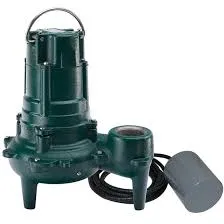Romanian
- Afrikaans
- Albanian
- Amharic
- Arabic
- Armenian
- Azerbaijani
- Basque
- Belarusian
- Bengali
- Bosnian
- Bulgarian
- Catalan
- Cebuano
- Corsican
- Croatian
- Czech
- Danish
- Dutch
- English
- Esperanto
- Estonian
- Finnish
- French
- Frisian
- Galician
- Georgian
- German
- Greek
- Gujarati
- Haitian Creole
- hausa
- hawaiian
- Hebrew
- Hindi
- Miao
- Hungarian
- Icelandic
- igbo
- Indonesian
- irish
- Italian
- Japanese
- Javanese
- Kannada
- kazakh
- Khmer
- Rwandese
- Korean
- Kurdish
- Kyrgyz
- Lao
- Latin
- Latvian
- Lithuanian
- Luxembourgish
- Macedonian
- Malgashi
- Malay
- Malayalam
- Maltese
- Maori
- Marathi
- Mongolian
- Myanmar
- Nepali
- Norwegian
- Norwegian
- Occitan
- Pashto
- Persian
- Polish
- Portuguese
- Punjabi
- Romanian
- Russian
- Samoan
- Scottish Gaelic
- Serbian
- Sesotho
- Shona
- Sindhi
- Sinhala
- Slovak
- Slovenian
- Somali
- Spanish
- Sundanese
- Swahili
- Swedish
- Tagalog
- Tajik
- Tamil
- Tatar
- Telugu
- Thai
- Turkish
- Turkmen
- Ukrainian
- Urdu
- Uighur
- Uzbek
- Vietnamese
- Welsh
- Bantu
- Yiddish
- Yoruba
- Zulu
Telephone: +86 13120555503
Email: frank@cypump.com
dec. . 16, 2024 04:23 Back to list
Comparison of Single Suction and Double Suction Pumps for Various Applications
Single Suction vs. Double Suction Pumps An Overview
Pumps are essential components in various industrial applications, transporting fluids from one location to another. Understanding the differences between single suction and double suction pumps is important for engineers, designers, and operators involved in fluid handling systems. This article delves into the distinguishing features of single suction and double suction pumps, their applications, advantages, and considerations for use.
Definitions and Mechanisms
A single suction pump typically features an impeller that draws fluid from one side. The design allows fluid to enter the pump only from a single inlet, resulting in simpler construction and relatively lower costs. These pumps are usually employed in applications where the fluid source is readily available at one side, and efficient flow is required.
Conversely, a double suction pump has two inlet ports, allowing fluid to enter from both sides of the impeller, resulting in a balanced design. This double port layout minimizes axial thrust and is particularly advantageous for handling larger fluid volumes and achieving higher efficiencies, especially at larger flow rates.
Applications
Single suction pumps are widely used in agricultural irrigation systems, municipal water supply, and various industrial processes where straightforward design and lower pressure requirements are typical. They're effective in applications where space and budget constraints necessitate a simpler pumping solution.
Double suction pumps, on the other hand, are favored in high-capacity and high-pressure applications, such as power generation, large-scale water treatment plants, and heavy-duty industrial processes. Their design enables them to handle larger volumes of fluid with greater efficiency, making them ideal for high-flow scenarios.
Advantages
single suction vs double suction pump

The advantages of single suction pumps include
1. Simplicity Their straightforward design translates to ease of maintenance and operation. 2. Cost-Effectiveness They are generally less expensive to manufacture and install, making them a suitable choice for projects with budget constraints. 3. Space Efficiency Single suction pumps can fit into tighter spaces, which is advantageous in smaller installations.
In contrast, double suction pumps offer benefits such as
1. Higher Efficiency The design allows for better performance at high flow rates, leading to energy savings. 2. Reduced Vibration and Noise The balanced nature of the design results in lower vibrations and quieter operation, which is often desirable in industrial settings. 3. Increased Lifespan Due to reduced mechanical stresses, double suction pumps often have longer service lives compared to their single suction counterparts.
Considerations for Use
When selecting between single and double suction pumps, several factors should be considered. For instance, the desired flow rate, pressure requirements, fluid characteristics, and available budget all influence the decision. If the application involves high flow and pressure, a double suction pump is typically advantageous. However, for lower capacity needs, a single suction pump might suffice and prove more economical.
Moreover, understanding the specific operating environment is crucial. Factors such as temperature, viscosity, and potential for cavitation will dictate the appropriate pump choice.
Conclusion
In conclusion, single suction and double suction pumps serve distinct roles in fluid transport applications. While single suction pumps offer simplicity and cost-effectiveness, double suction pumps excel in efficiency and capacity for high-demand scenarios. A careful analysis of project requirements will guide decision-makers toward selecting the appropriate pump type, ensuring that the system operates efficiently and effectively. By understanding the fundamental differences between these pumps, engineers can optimize their designs and improve the overall performance of fluid handling systems.
-
Horizontal Split Case Pump with GPT-4 Turbo | High Efficiency
NewsAug.01,2025
-
ISG Series Pipeline Pump - Chi Yuan Pumps | High Efficiency, Durable Design
NewsAug.01,2025
-
Advanced Flue Gas Desulfurization Pump with GPT-4 Turbo | Durable & Efficient
NewsJul.31,2025
-
ISG Series Vertical Pipeline Pump - Chi Yuan Pumps | Advanced Hydraulic Design&Durable Construction
NewsJul.31,2025
-
ISG Series Vertical Pipeline Pump - Chi Yuan Pumps | Energy Efficient & Low Noise
NewsJul.31,2025
-
pipeline pump - Chi Yuan Pumps Co., LTD.|High Efficiency&Low Noise
NewsJul.31,2025










